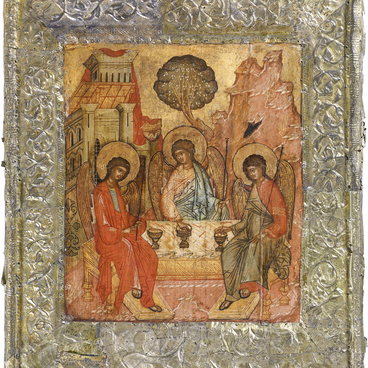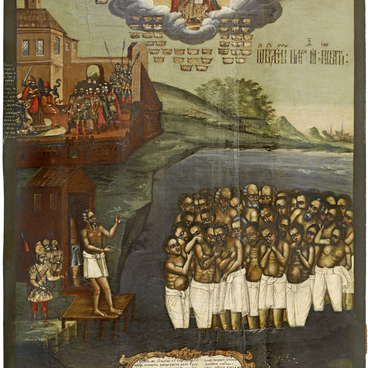Florus and Laurus are Christian martyrs who lived in the 2nd century. They were famous stonemasons in the Roman province Illyricum. They were sent to a neighboring region to build a temple in honor of Heracles but instead of it, they erected a Christian church. As a punishment for that action, they were thrown into an empty well and buried alive with stones. Later, on the day when their relics were found, a severe horse plague ended so these martyrs started to be considered the patrons of horses.
The iconography of the depiction Florus and Laurus was established in the 15th century. In the middle of the 16th century, Metropolitan Makarius included the hagiographies of these saints into the book The Great Menaion Reader and the icon became very popular.
With regard to composition, the image was divided into two parts. The Archangel Michael alone or with two harnessed horses was painted in centre of the upper part. Florus and Laurus were depicted on his sides on hills. Though the brothers were twins, on icons Florus was painted as a middle-aged man while Laurus as a young man. The lower part of the icon contains the depiction of horses.
The iconography of the depiction Florus and Laurus was established in the 15th century. In the middle of the 16th century, Metropolitan Makarius included the hagiographies of these saints into the book The Great Menaion Reader and the icon became very popular.
With regard to composition, the image was divided into two parts. The Archangel Michael alone or with two harnessed horses was painted in centre of the upper part. Florus and Laurus were depicted on his sides on hills. Though the brothers were twins, on icons Florus was painted as a middle-aged man while Laurus as a young man. The lower part of the icon contains the depiction of horses.

